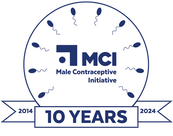|
MPTs or Multipurpose Prevention Technologies are products created to prevent unintended pregnancy and protect against HIV and other sexually transmitted infections. In order for a product to be labeled as an MPT, it must protect the user from at least two of the following reproductive health risks: HIV, STI transmission, and unintended pregnancy. MPTs give users in different stages of their reproductive journey the ability to discretely address their sexual and reproductive health needs. For example, a college-aged woman who’s focused on preventing pregnancy and reducing STI transmission may have different contraceptive preferences than MSM (men who have sex with men) who have a higher risk of HIV transmission. MPTs have the potential to affect the global sexual and reproductive landscape by protecting young girls from the health risks associated with early childbearing. Similarly, older women can be protected from the health risks that affect women in the later stages of their reproductive lives. Society will benefit as a whole when people have access to products that are safe, effective, and affordable for all users. MPTs can serve as a resource for people who want to take an active role in controlling their reproduction by ensuring any future pregnancies are planned and intentional. The male and female condoms are the only available MPTs on the market. Despite their effectiveness at preventing pregnancy and reducing STI transmission, many people report some level of dissatisfaction when trying to access or use condoms. Some users are concerned with reduced stimulation while others may have latex allergies, or simply cannot afford condoms. Ultimately, the current market of products available is unable to address every user’s needs. Researchers are focused on developing MPTs as an efficient way to target a range of SRH needs in low-resource areas. There are many different forms of MPTs across all stages of the research and development pipeline that include but are not limited to rings, inserts, gels, pills, patches, and injectables. These novel devices were designed to address the limitations of the existing contraceptive method mix by offering products that cater to different user preferences. Ideally, having access to a multitude of on-demand and long-term contraceptive options will ensure that the greatest number of people have the tools to achieve reproductive autonomy. In 2018, $48M was invested in research and development for new MPTs. While these funds have been useful in supporting new MPTs through the development pipeline, there has been less than vested interest from pharmaceutical companies when it comes to funding research and development. The majority of funding for MPTs comes from the public sector which is often used to support early-stage research. Unfortunately, large pharmaceutical companies are hesitant to fund MPT research given the high cost of clinical trials and large time investment. A similar phenomenon can be observed when comparing the drug development landscape of MPTs to that of novel reversible non-hormonal male contraception. Each field is left to rely heavily on public sector investments for late-stage development resulting in an expensive and time-consuming development process. Nuts & Bolts: MPTs Sources/References: Boonstra, H. D., & Guttmacher Institute. (2018, October 11). Multipurpose prevention technologies for the developing world: U.S. investment is critical. Guttmacher Institute. Retrieved February 18, 2022, from https://www.guttmacher.org/gpr/2015/09/multipurpose-prevention-technologies-developing-world-us-investment-critical Press release G-Finder SRH 2020. Policy Cures Research. (n.d.). Retrieved February 18, 2022, from https://www.policycuresresearch.org/media_release/press-release-gfinder-srh-2020/ HIV Resource Tracking Working Group. (2021, December 8). Retrieved February 18, 2022, from https://www.hivresourcetracking.org/ Bethany Young Holt, James Kiarie, Gregory S Kopf, Kavita Nanda, Anke Hemmerling, Sharon L Achilles, Bridging the gap: advancing multipurpose prevention technologies from the lab into the hands of women, Biology of Reproduction, Volume 103, Issue 2, August 2020, Pages 286–288, https://doi.org/10.1093/biolre/ioaa085 AVAC: Global Advocacy for HIV Prevention. (2021). Advocates’ Guide to Multipurpose Prevention Technologies (MPTs) What are MPTs? https://www.avac.org/sites/default/files/resource-files/MPT_advocacy_spread_May_24_2021.pdf Frequently Asked Questions about MPTs from IMPT for Reproductive Health For additional publications related to male contraception and the male reproductive system, please visit our publications page:
1 Comment
Jonathan Shakes
10/13/2022 11:20:19 am
This article says "...large pharmaceutical companies are hesitant to fund MPT research given the high cost of clinical trials and large time investment." That can't be the reason. Large pharma companies have plenty of budget and time for research in other areas. According to https://www.cbo.gov/publication/57126 they invested $83 billion in 2019.
Reply
Your comment will be posted after it is approved.
Leave a Reply. |
Categories
All
Archives
June 2024
|
|
|
Donate to Male Contraceptive InitiativeYour generous donation makes a difference!
|
© Male Contraceptive Initiative. All rights reserved.


 RSS Feed
RSS Feed
